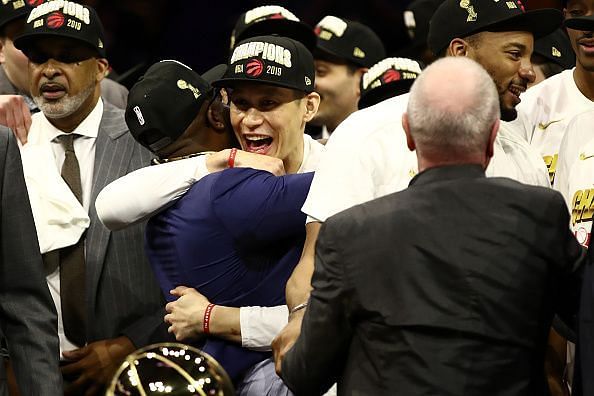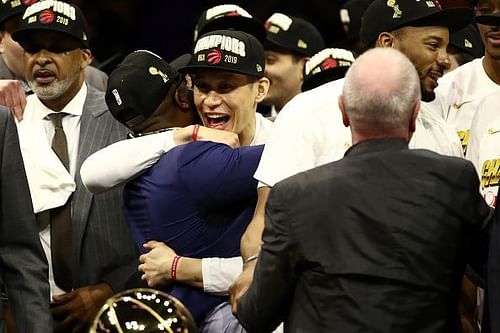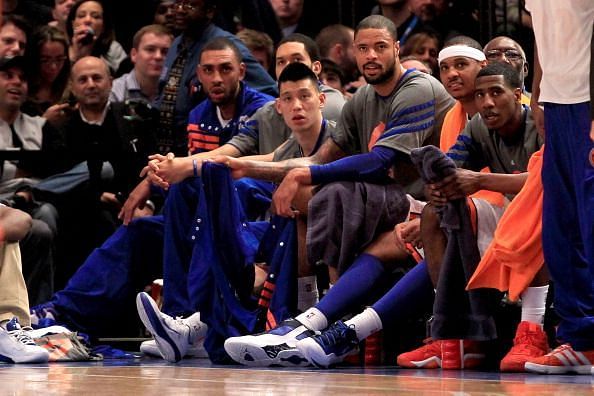
How growth and globalization are impacting NBA

The recent news of Jeremy Lin breaking down when sharing his struggles as a free agent at a church in Taipei shed some light on the reality of being an NBA player. Making the NBA may be difficult enough, but it is even harder to stay in the NBA. Every year, 60 college hopefuls get drafted, with all 30 second-rounders having no guarantees of an NBA contract. In recent times, this has improved with the introduction of two-way contracts where players can spend up to 45 days with the team in NBA and the rest with its G-League affiliate. A cursory conclusion of this new initiative is that NBA has given teams more flexibility in retaining more players. However, the reality is that only two players can sign this contract, which stretches the roster from 15 to 17.
At the 2018 NBA draft, 52 NCAA players were selected from a pool of 4181 draft-eligible Division 1 (D-1) basketball players, a paltry 1.2%. And how many players even get to the D-1 level? About 3.4% of high school players. And that was what made Jeremy Lin’s story so remarkable. An unranked recruit, coming from an unheralded high school and a college which produces more presidents than NBA players. Perhaps, it can be argued that his Asian heritage facilitated his journey to the NBA, as he commanded high marketing value but the reality is no one has bettered his averages of his PPG and APG in their 7 starts. Neither Magic nor Stockton, Curry or CP3. And yet, he is on the cusp of failing to make an NBA roster.
A change of guard?
The reasons for this may be more fundamental than we realize. Players are getting better, bigger, stronger, faster every day. NBA teams may have the best training facilities in the world, but everyone else is catching up. There is a reason why top recruits are increasingly taking alternative paths to the NBA. Many of them have been training in top-notch facilities all their lives, with outstanding coaches in the prep schools they attend. College used to be the first time many players stepped into proper gyms and had sound coaching. Fictitious as the farm boy-to-college star scenarios in the movie Blue Chips may have been, it is an even further reality now.
And all this preparation, coupled with intensive scouting on the grassroots circuits means that players are getting regular feedback, which is key to their improvement. And with progress, some will ultimately lose as well. In college, the upperclassmen have been losing out as they relinquish their starting spots to highly touted freshman. What about the NBA? Is this phenomenon slowly catching with the NBA as well? In 2018, the average player in the league is 26 years old. In the 1999/2000 season, the average age was 28 years. More undrafted players are making a legitimate impact than ever before. Players like Alonzo Trier and Fred VanVleet show us that there is much high-level talent in the undrafted rungs as well. Where does this leave their more experienced, older counterparts like Lin and even Carmelo? On the side, as unsigned free agents. And with the impending draft change that affirms the Preps to Pros route, the average age of an NBA player is slated to only decrease.

The NBA of today and tomorrow?
Of course, this is not to say that NBA will be taken over by younglings from college/overseas. Experience still counts for something. Talent does not necessarily translate to the NBA where players also have to assimilate to the demands and rigors of an 82 game season. But this means that the talent gap between the NBA players and the College/Overseas players are decreasing. And slowly but surely, the gap in experience can be mitigated by the superiority in talent. The NBA knows this, with plans to expand the draft. The world knows this, with more international players than before in the NBA. In fact, as the NBA pushes its “Global Game” initiative in a bid to showcase the multi-nationalism that is the NBA today, they are also acknowledging is that the talent gap is decreasing, faster than before. Soon, more players like Lin will be looking from the outside in as younger players take their roster spots.
It takes a tremendous amount of hard work to stay relevant in the NBA. That goes without being said. But now, the talent pool has and will continue to increase exponentially. And teams are able to scout globally and thoroughly and choose the best players to fit their team. Soon, they may no longer need to retain as many experienced NBA veterans to fill their rosters. The irony is this that globalisation brought Lin and his family to America, where a better life and jobs awaited them. Now, globalization has brought Lin turmoil and anxiety as he waits to be signed. Growth meant that Lin went under-the-radar and undrafted but had the necessary skills to compete with the very best. Growth also means that his NBA future is now uncertain.